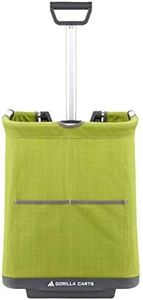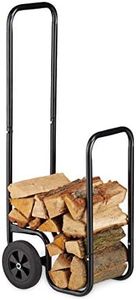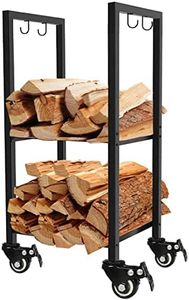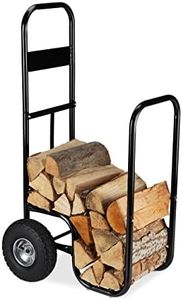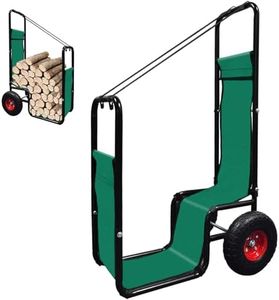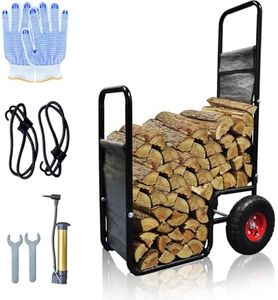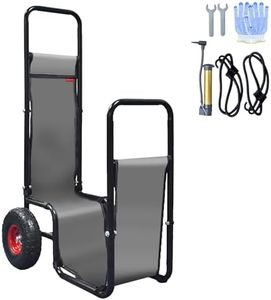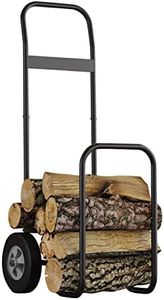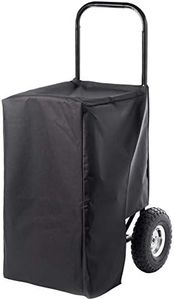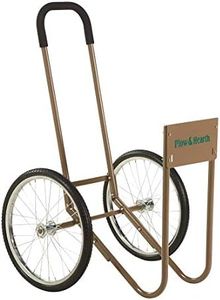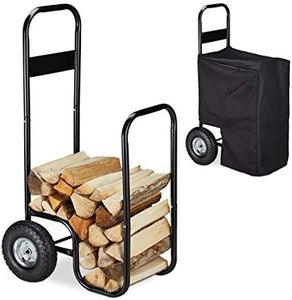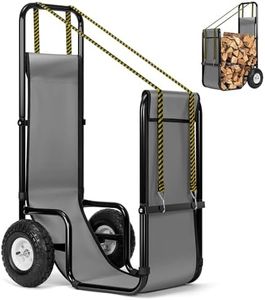We Use CookiesWe use cookies to enhance the security, performance,
functionality and for analytical and promotional activities. By continuing to browse this site you
are agreeing to our privacy policy
10 Best Firewood Carts
From leading brands and best sellers available on the web.Buying Guide for the Best Firewood Carts
Choosing the right firewood cart can make hauling and storing firewood much easier and more efficient. The best cart for you will depend on how much firewood you typically move, the kind of terrain you navigate, and how you'll store or use your cart when it's not in use. By understanding key features, you'll find a cart that fits seamlessly into your routine and makes the task less of a chore.Load CapacityLoad capacity refers to how much weight or volume the cart can safely carry at one time. This is important because too small a cart means more trips, while too big a cart can be unwieldy or harder to store. Load capacities usually range from about 100 pounds to over 400 pounds. Smaller capacities are manageable and ideal for lighter use or people with less storage space, while larger capacities suit frequent, heavy hauling. To pick the right one, estimate the most wood you'll need to carry at once and consider your physical strength and storage options.
Wheel Type and SizeWheels are crucial because they determine how easily you can move the cart across different surfaces. Wheel size varies from small and hard wheels, suitable for smooth indoor movement, to large pneumatic (air-filled) tires that easily roll over rough or uneven terrain like gravel, grass, or snow. If you mostly transport wood over rough outdoor ground, choose larger, rugged wheels. If your movement is mostly across patios or driveways, smaller, rigid wheels might suffice. Your yard's surface should guide your wheel choice.
Material and DurabilityCarts are typically made from steel, aluminum, or heavy-duty plastics. Steel is the most durable and can handle heavy, repeated use, but it can also be heavy and sometimes susceptible to rust if not maintained. Aluminum is lighter and rust-resistant but might carry less weight. Plastic is lightweight but usually best for light-duty tasks. Think about how much abuse your cart will take and whether you plan to store it outside—this will point you toward the right material.
Cart Design and Storage OptionsCart design refers to its overall shape, balancing, and whether it comes with side rails, flatbeds, or additional racks for tools. Some carts are compact and upright for easy storage, while others have a wider base for stability. Think about where you'll store your cart and how much space you have. If you have limited space, a slimmer or foldable design can be handy. Stability is also important, especially for moving large loads—wider carts tip over less easily.
Handle Comfort and ManeuverabilityThe comfort and ergonomics of the handle play a big role in ease of use, especially when moving heavy loads. Handles may be padded, have adjustable heights, or be designed for two-handed use. If you have specific needs such as limited grip strength or plan on using the cart for longer periods, look for padded and ergonomic designs. Trying to guess what will feel comfortable to you, imagine pushing and pulling the load you expect to carry most often.

